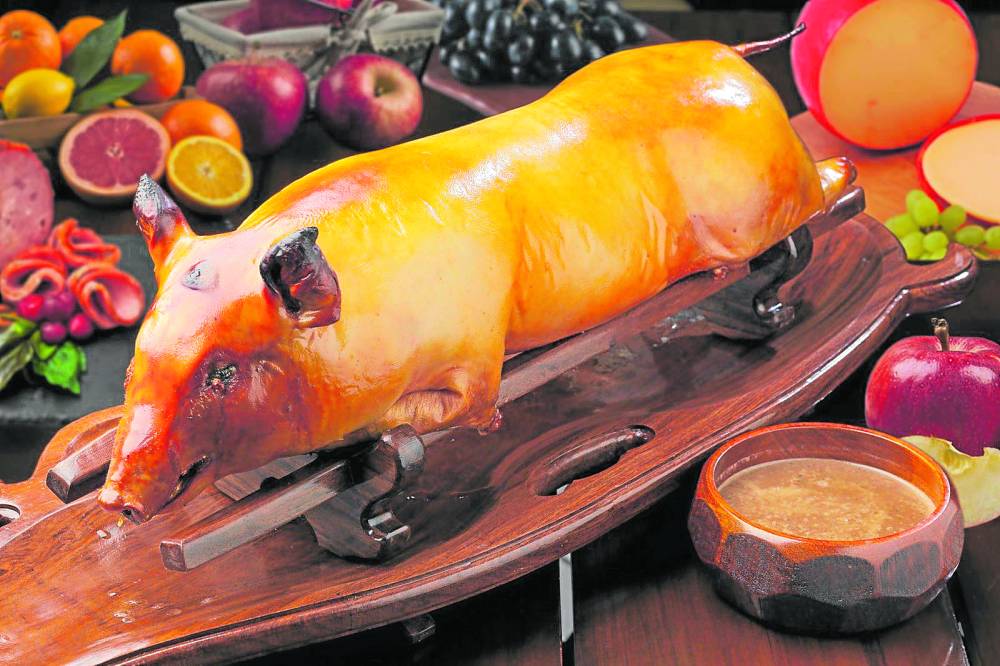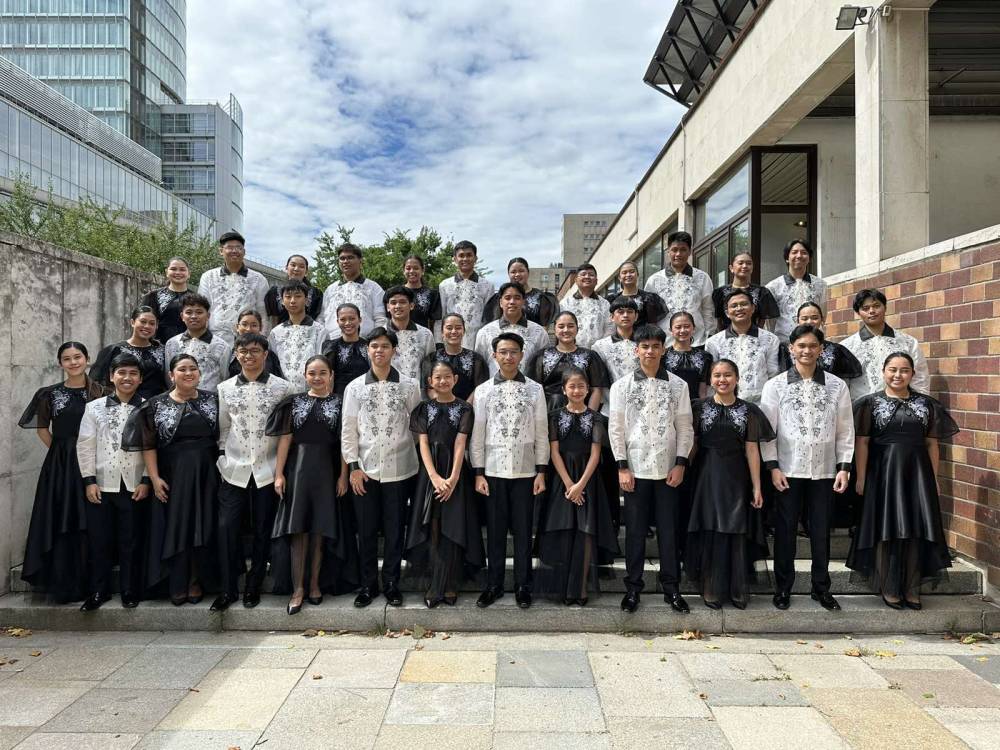
The “media noche” table is much like that of the “noche buena,” but blended with Spanish dishes and influenced by Chinese traditions such as the display of red round fruits and luxurious food, to invite abundance for the coming year.
A symbol of plenty is the roasts, served whole. For us, the lechon has always been and will forever be the star of any Pinoy feast.
Imagine crisp, hot, golden-brown skin that’s crunchy on the outside, with soft, juicy and succulent fall-off-the-bone meat on the inside.
With the abundance of dressed suckling pigs in the market, why not dare make your own?
To make it is quite simple. Be fearless; for, after all, all pigs at some point will turn crisp!
After years of roasting pigs, I’ve learned that the quality of the pig is of prime importance. A good lechon is largely dependent on the size, the gender and that layer of fat between the meat and skin.
While all pigs will turn crisp, how long it stays so becomes the problem. For lechon skin to stay crunchy for long, I observed that there needs to be a layer of fat between the meat and the skin. Without it, the heat from within blows steam on the skin, and without that layer of fat to protect it, the skin eventually loses its crunch.
Small pigs do not stay crisp long and hence must be eaten right away. I am partial to roasting female pigs. It has a better aroma.
I would not roast anything less than 8 kg if I want to transport it. Bigger pigs stay crunchy longer. Those less than 8 kilograms would be good to serve right after roasting.
For stuffed pigs, the smallest size I recommend is 6 kg dressed weight.
The slower the pig is roasted, the better. It is best to roast at 325°F for 1½ -2 hours for 5-6-kg pigs, then slowly raise the temperature to 375°F and continue roasting until the skin of the pig is nice and golden brown. This way the flesh is soft and creamy and the skin is crisp.
Piglets below 5 kg are best to make cochinillo.
Flavoring the pig
Salt the skin well with pure sea salt. It does wonders to the skin both for crispness and flavor.
I like to dry roast peppercorns in a pan until fragrant and till the peppers are shiny. I then pound them to crack slightly, then use that to flavor the cavity.
I prefer roasting my lechons in a pugon (wood-fired oven); it just has a better flavor.
Here is my recipe for what I call a Lechon Tagalog, made aromatic with young banana leaves and young sampaloc fronds. It is served with coconut rice and a delicious liver sauce.
May your 2022 be filled with good cheer, much love and God’s peace. Wishing you a healthy and happy New Year!
This lechon has a nice clean taste.
Lechon Tagalog
- 1 6-kg lechon de leche⅔ c sea salt, divided for rubbing the cavity and on the skin
- 250 g young banana leaves (light green color), chopped
- 3 c tender shoots of sampaloc leaves and florets. Always use tender shoots. Old leaves will make the flavor taste “grassy” and old.¼ c roasted peppercorns, lightly crushed
- 2 Tbsp vegetable oil
Wash the cavity of the pig by pouring hot water into it. Drain. Pat dry the entire piglet. Rub cavity with ⅓ c sea salt. Combine filling ingredients and stuff into cavity of the pig. Sew up openings.
Rub ⅓ c salt on the skin until salt melts and is absorbed by the skin. Put pig on a rack over a baking tray. Oil the ears and the tail and wrap with foil. If time permits, let pig sit for 2-3 hours to marinate. Roast in 325°F or 350°F oven for 1½-2 hours. Increase heat to 375°F and continue to roast until skin is nicely golden brown and crisp. Brush with a little oil from its drippings. Let rest 15 minutes before serving.
- Coconut rice
- 4 c jasmine rice, washed and drained well
- 4 c chicken stock
- 1 tsp salt
- 1 c coconut milk
- Cilantro for garnish
Combine rice, stock and salt in a rice cooker and cook. Warm the coconut milk. Incorporate into hot rice. Season with salt. Top with cilantro
Liver sauce
- ¼ c oil
- 2 slices ginger
- 2 c chopped white onions
- ¼ kg pig liver cleaned
- ¼ kg chicken liver
- ⅓ c Chef Reggie’s Aromatic Seasoning Wine
- ¼ c vinegar
- ½ c brown sugar
- ¼ c soy sauce
- 1 tsp whole peppercorn
- 2 c pork stock
- ¼ c white sugar, plus-minus 1 can liver spread
- 1 tsp sesame oil
Heat oil and saute ginger and onions until caramelized. Add liver and wine. Cook until wine is reduced.
Add the rest of the ingredients except the white sugar, liver spread and sesame oil. Simmer for 20-30 minutes.
Puree in a blender. If the sauce is still too sour, simmer some more, taking care not to scorch the bottom. Add water gradually to get desired consistency. Continue simmering until oil has surfaced. Add liver spread; season to taste. Add sesame oil last off the fire. INQ
Suppliers:
Brick oven: Jerry Yu, tel. 0920-5760256. Pigs can be bought at Landers, S&R. Juliet’s Lechon, tel. 85644740, 85674740; Joe and Abigail’s, tel. 0920-9210376; Sheena Lao, tel. 0917-8812439; My Own Meat Shop, tel. 83723944; Pacific Bay, pacificbay.com; Manny Torrejon, @torrejonmanny on Instagram.
Follow @iamreggieaspiras on Facebook and Instagram; reggieaspiras.com













































